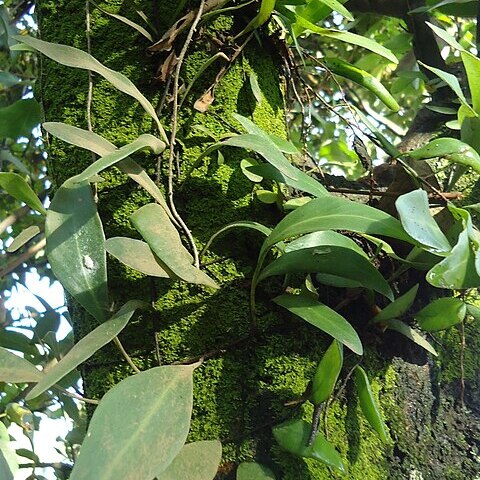Plants epiphytic and epilithic, small to medium-sized. Rhizomes shortly to long creeping, densely scaly. Fronds monomorphic or dimorphic, remote or clustered, covered with stellate hairs; lamina simple, rarely hastate or palmately to pedately divided; main veins distinct; lateral veins obliquely spreading, distinct or obscure; veinlets distinct or obscure and joined into different types of areoles, these with included veinlets, mostly ending with an adaxial hydathode. Sori orbicular, borne at ends of included veinlets, in 1 to several rows on each side of main veins, sometimes confluent into linear coenosori, exindusiate, sometimes with stellate paraphyses. Sporangia sessile to long stalked. Spore elliptic, variously ornamented. x = 37.
Rhizome densely scaly; scales non-clathrate. Stipes articulated to short stalks (phyllopodia) borne along rhizome. Lamina usually simple, entire, monomorphic or dimorphic, thick, coriaceous, clothed when young with stellate hairs; upper surface glabrescent; veins, apart from midvein, hidden in substance of the frond. Sori usually borne on underside of upper part of frond, superficial or partly immersed in lamina, in 1–many closely packed rows on each side of midrib, often confluent with age, with stellate paraphyses. Spores smooth or rough, yellow or pale and translucent. [See also Du Puy (1993: 548–549), Green (1994: 572).]
Sori round to elongate, exindusiate, us. on included veinlets; with stellate paraphyses; veins obscured, irregularly anastomosing. Epiphytes with creeping paleate rhizomes, the simple fronds articulated to the rhizomes. Lamina coriac., clad below in stellate paleae. Perhaps 100 spp. mostly of Asia, Polynesia and Africa.
Sori separate, round, variously distributed

